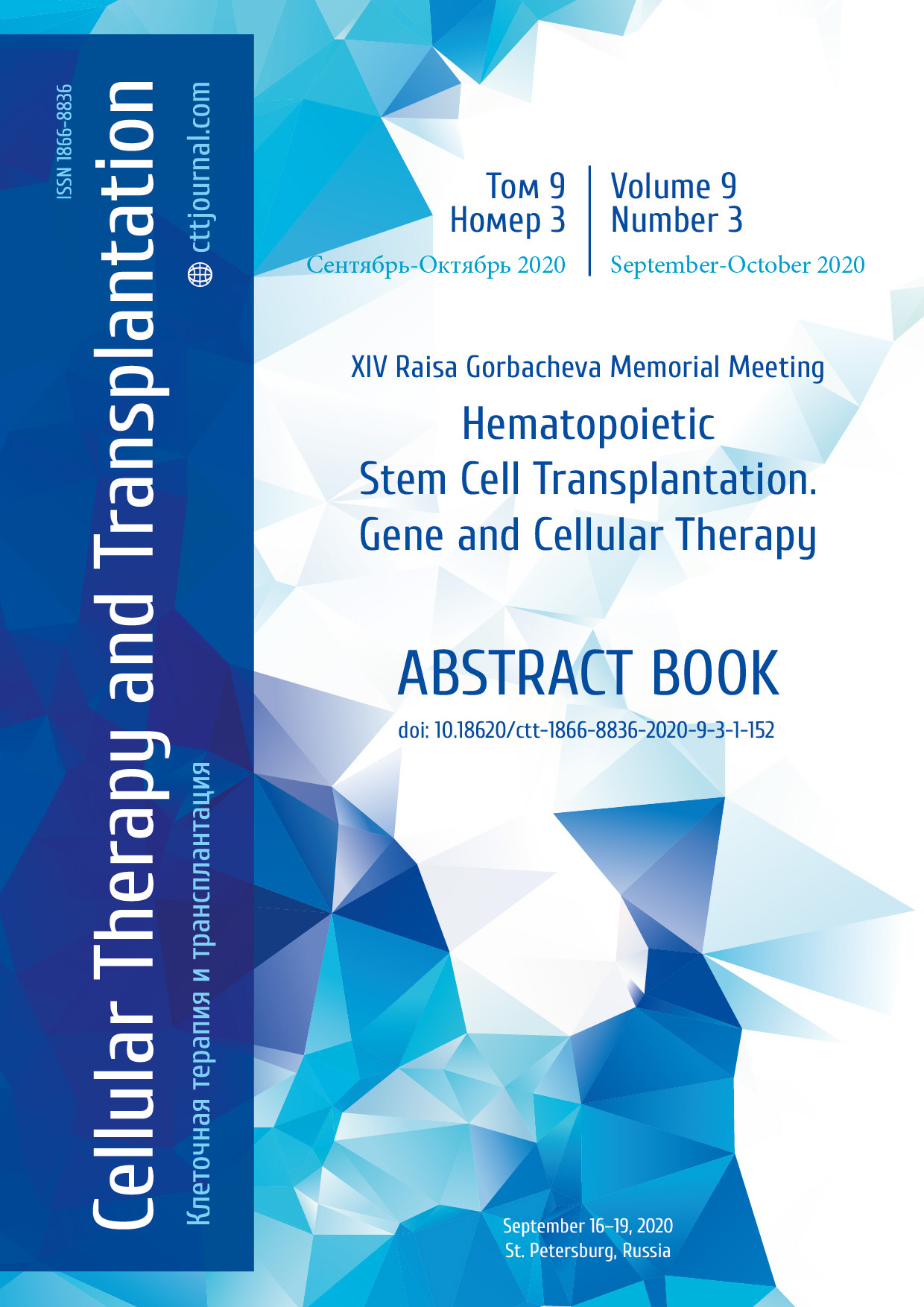IC-07. Extracorporeal photopheresis in children with chronic graft-versus-host disease
Andrey V. Kozlov, Irina P. Solodova, Tatyana A. Bykova, Olesya V. Paina, Irina I. Kulagina, Sergey N. Bondarenko, Marya A. Estrina, Ludmila S. Zubarovskaya, Boris V. Afanasyev
RM Gorbacheva Research Institute of Pediatric Oncology, Hematology and Transplantation, Pavlov University, St. Petersburg, Russia
Contact: Dr. Andrey V. Kozlov, e-mail: kozlovandrew@list.ru
Summary
Introduction
Allogeneic hematopoietic stem cell transplantation (allo-HSCT) is widely used in children with definite hematological, oncological and metabolic disorders. Chronic graft-versus-host disease (cGVHD) is a severe complication of allo-HSCT that significantly affects outcome. In First Pavlov Saint Petersburg Medical University, extracorporeal photopheresis (ECP) is used for the treatment of children with steroid-refractory cGVHD. ECP, also called “photopheresis” and “extracorporeal photochemotherapy”, is a multi-step process in which the isolated mononuclear cells from a patient are exposed to a standard dose of ultraviolet A (UVA) irradiation (approximately 1.5 J/cm2) using a photosensitive drug 8-methoxypsoralen (8-MOP) at a concentration of 60-200 ng/μl. ECP is an established treatment option for steroid-refractory cGVHD in adults, but its role in pediatric practice is less well defined. The aim of the study was to assess the effectiveness of ECP in children with steroid-refractory cGVHD after allo-HSCT.
Patients and methods
Fifty children were enrolled in the study. Acute leukemia was diagnosed in 40 (80%), with chronic myeloid leukemia in 1 (2%), myelodysplastic syndrome/myeloproliferative disorder in 2 cases (1%), and other oncological or hematological diseases, in 7 (14%). According to classification NIH 2005, severe cGVHD was diagnosed in 26 children (52%), moderate, in 19 cases (38%), and mild, in 5 children (10%). Steroids were used as a first-line therapy. All the patients had steroid-refractory cGVHD. Median follow-up was 732 days (68-4085). ECP was used as two consecutive procedures biweekly for first 3 months. Further treatment schedule was customized according to patient response and tolerability.
Results
Response to ECP was diagnosed in 36 cases (72%), with complete response, 24%; partial response, 48%. Overall survival at 10 years, according to Kaplan-Meier, was 42.4%. Only 4 deaths were associated with uncontrolled cGVHD, and 14 were associated with disease progression.
Conclusion
ECP is effective in children with steroid-refractory cGVHD, with overall response rate of 72%. Long-term overall survival remains suboptimal, due to aggressive course of the underlying disease, and only few patients succumb to uncontrolled cGVHD.
Keywords
Chronic graft-versus-host disease, children, photopheresis.


